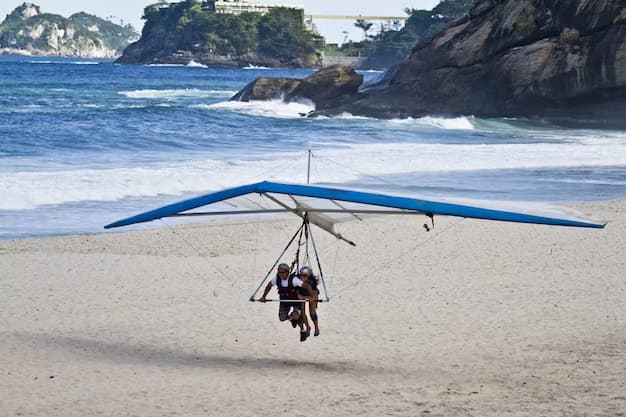Exploring Motorized Hang Gliding: A Comprehensive Guide
Experiencing the thrill of flight through motorized ultralight aircraft offers a unique and exhilarating perspective on aviation. For those considering powered hang gliding or paramotoring, understanding the nuances of each is crucial. This guide aims to assist both experienced hang glider pilots seeking motorized adventure and newcomers to aerial sports in making an informed decision between powered hang gliders and paramotors.
Defining Powered Hang Gliders and Paramotors
Motorized hang gliders and paramotors represent the engine-enhanced variants of traditional hang gliders and paragliders. These motorized versions allow pilots greater control over takeoff and prolonged flight, offering distinct advantages over their non-motorized counterparts. Powered hang gliding, in particular, tends to offer more dynamic flight experiences compared to paramotoring.
Key Differences: Hang Gliders vs. Paramotors
While both fall under the umbrella of ultralight aviation, powered hang gliders and paramotors have distinct characteristics. This article delves into these differences, addressing aspects like safety, ease of use, and the overall enjoyment factor of each.
Assessing Safety: Which is Safer?
Safety is a paramount concern in any aerial sport. This section compares the safety profiles of powered hang gliders and paramotors, discussing potential risks and highlighting the importance of maintenance and skill in mitigating these risks.
Ease of Learning and Operation
For beginners, the learning curve is a significant consideration. This segment evaluates which of the two sports is more accessible to novices, taking into account factors like physical demands and control complexity.
Comparing the Excitement Factor
The thrill and enjoyment derived from each sport vary based on personal preference. This part explores the exhilaration levels of powered hang gliding and paramotoring, helping enthusiasts decide which aligns better with their adventure-seeking temperament.
Video Guide
In order to answer your questions in more detail, we have prepared a special video. Enjoy watching it!
Navigating Regulatory and Legal Aspects
Engaging in powered hang gliding or paramotoring is not just about the thrill; it also involves navigating a landscape of regulations and legal considerations. These rules vary by region and are essential for ensuring safe and lawful flight. This section explores the key regulatory aspects, such as:
- Certification Requirements: Understanding the certification process for pilots and aircraft, and how it differs for powered hang gliders and paramotors;
- Airspace Restrictions: Insights into the types of airspace where motorized ultralights are permitted to fly, and the importance of adhering to these rules;
- Insurance and Liability: Discussing the importance of insurance for pilots and the potential liabilities associated with powered flight.
This information is crucial for anyone looking to safely and legally engage in these sports, highlighting the importance of being well-informed and compliant with local aviation laws.
Environmental Impact and Sustainability
As environmental consciousness grows, the impact of recreational activities like powered hang gliding and paramotoring on the environment comes into focus. This section delves into the ecological aspects, addressing:
- Carbon Footprint: Examining the environmental impact of the engines used in these aircraft, and potential ways to reduce emissions;
- Noise Pollution: Understanding the noise levels associated with these sports and their effect on wildlife and local communities;
- Sustainable Practices: Discussing innovations in eco-friendly propulsion and materials, and how enthusiasts can contribute to a more sustainable future in powered flight.
This segment aims to foster a balance between the passion for flight and environmental stewardship, encouraging pilots to consider their ecological footprint.
Pre-Flight Preparation Checklist
Ensuring a Safe and Enjoyable Flight: A Pre-Flight Checklist:
- Aircraft Inspection: Check the integrity of wings, engine, and control systems;
- Weather Assessment: Evaluate current and forecasted weather conditions;
- Flight Plan: Outline your intended route and duration;
- Safety Gear: Ensure availability and proper functioning of helmets, harnesses, and emergency equipment;
- Communication Devices: Verify the working condition of radios and GPS devices;
- Legal Compliance: Confirm adherence to local flight regulations and airspace rules;
- Physical and Mental Readiness: Assess your own fitness and focus for the flight.
This checklist serves as a reminder of the essential steps to take before embarking on a powered flight, prioritizing safety and preparedness.
Comparative Table: Powered Hang Gliders vs Paramotors
| Feature | Powered Hang Gliders | Paramotors |
|---|---|---|
| Engine Type | Typically larger and more powerful | Smaller, backpack-style engines |
| Takeoff and Landing | Requires more space | Can take off and land in smaller areas |
| Flight Duration | Generally longer due to larger fuel capacity | Shorter, limited by fuel and engine efficiency |
| Maneuverability | More challenging due to size and weight | More agile, easier to maneuver |
| Speed Range | Usually faster, suitable for longer distances | Slower, ideal for leisurely exploration |
| Learning Curve | Steeper, requiring more skill and practice | Easier, more accessible for beginners |
| Environmental Impact | Potentially higher due to larger engines | Lower, but still significant |
| Cost | Generally more expensive | More budget-friendly |
Conclusion
In conclusion, this guide synthesizes the information provided, aiding readers in choosing between powered hang gliding and paramotoring based on their individual needs, skill levels, and thrill-seeking desires.
